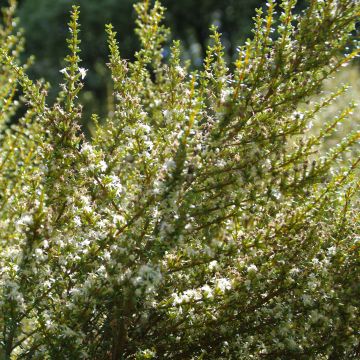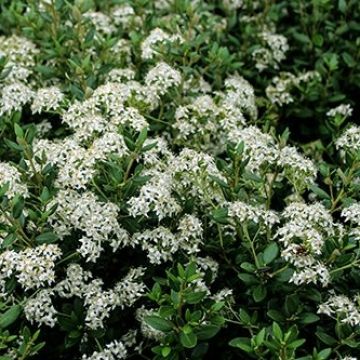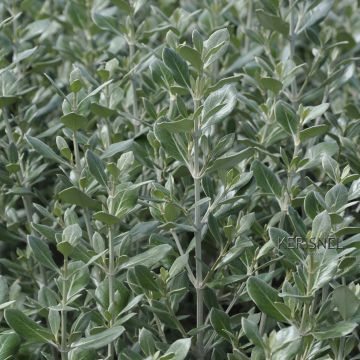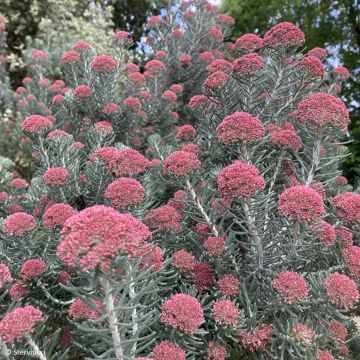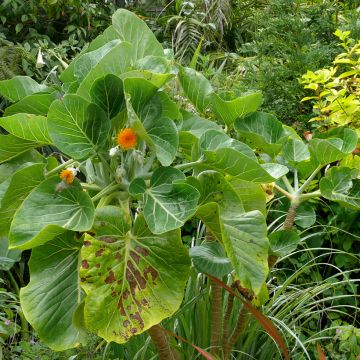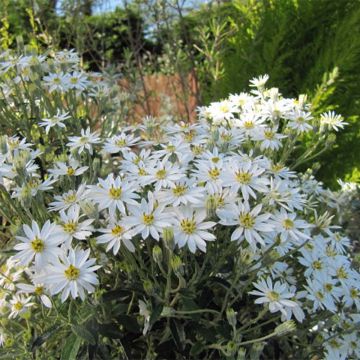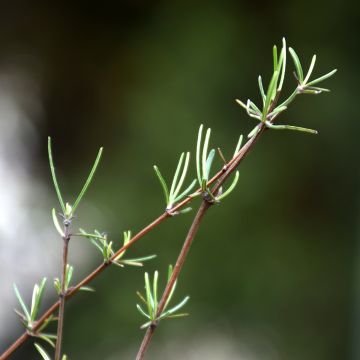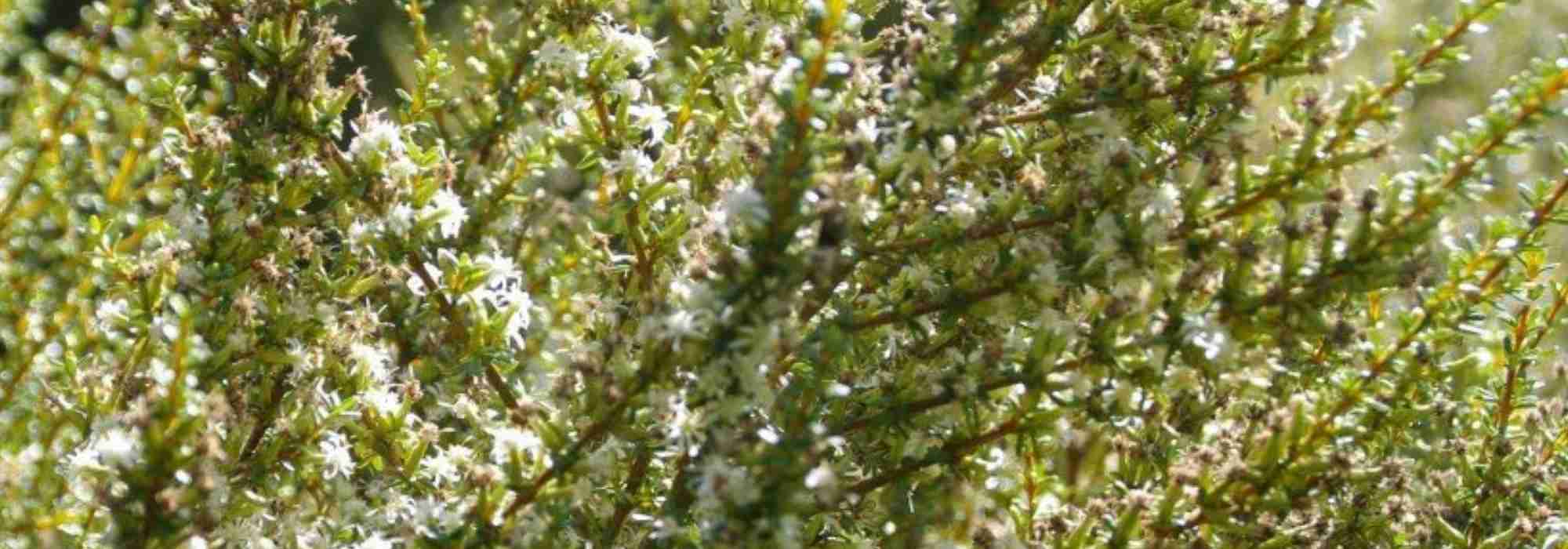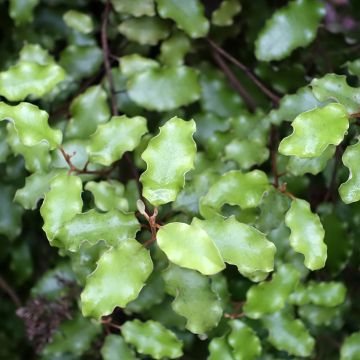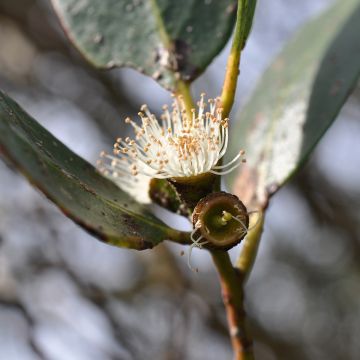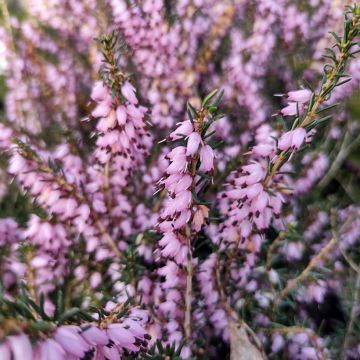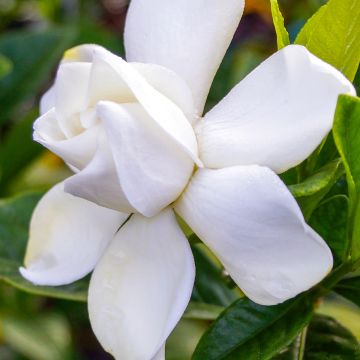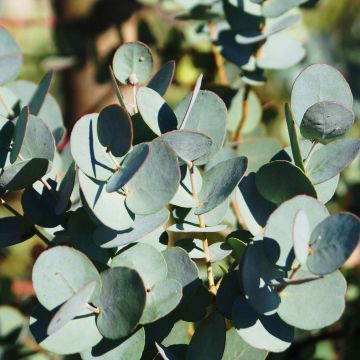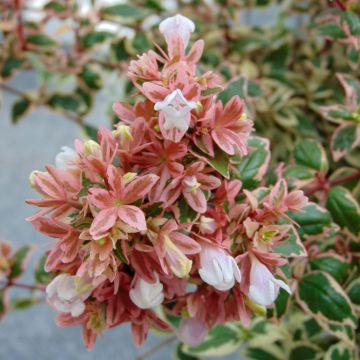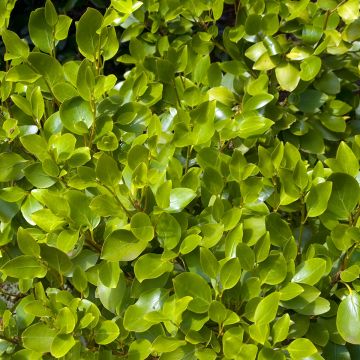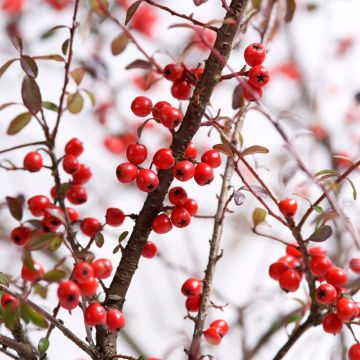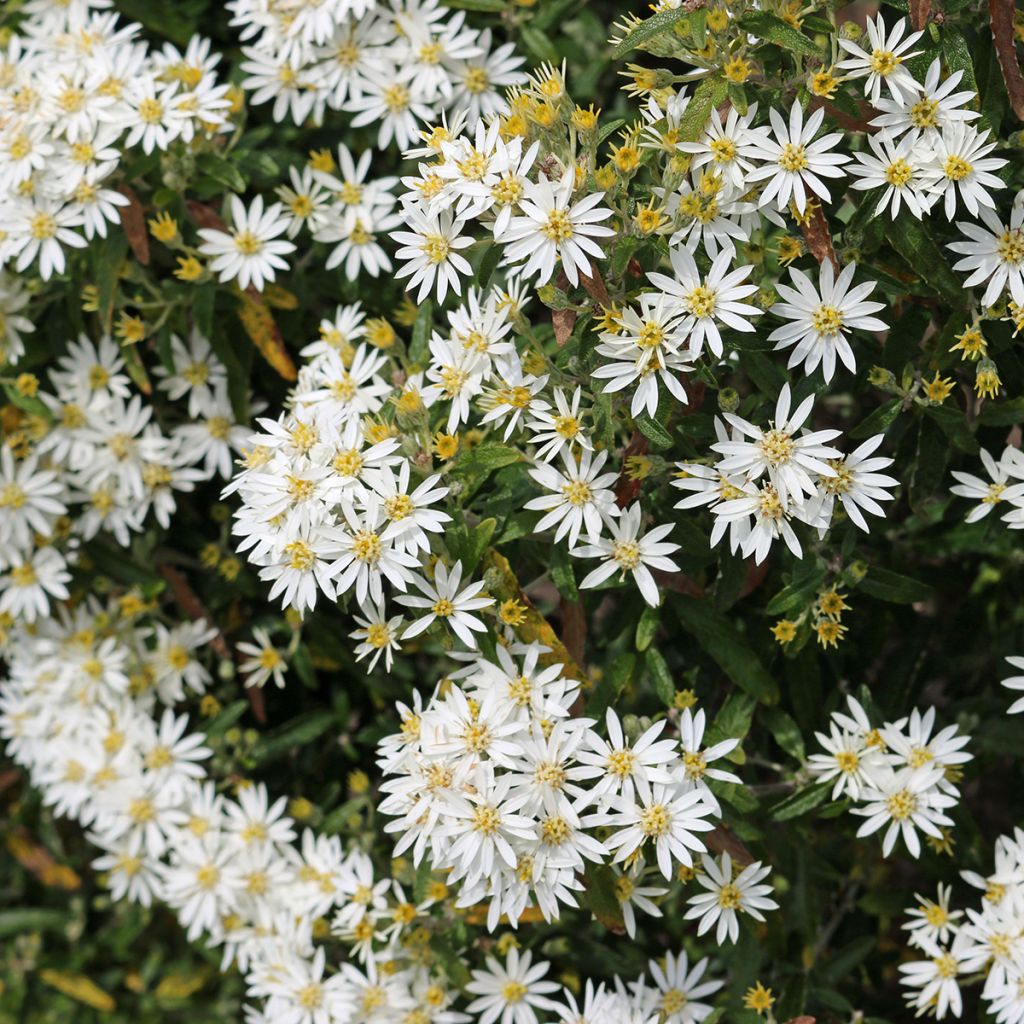

Olearia scilloniensis Compacta - Daisy Bush
Olearia scilloniensis Compacta - Daisy Bush
Olearia x scilloniensis Compacta
Daisy Bush, Scilly Bush
Special offer!
Receive a €20 voucher for any order over €90 (excluding delivery costs, credit notes, and plastic-free options)!
1- Add your favorite plants to your cart.
2- Once you have reached €90, confirm your order (you can even choose the delivery date!).
3- As soon as your order is shipped, you will receive an email containing your voucher code, valid for 3 months (90 days).
Your voucher is unique and can only be used once, for any order with a minimum value of €20, excluding delivery costs.
Can be combined with other current offers, non-divisible and non-refundable.
Why not try an alternative variety in stock?
View all →This plant carries a 24 months recovery warranty
More information
We guarantee the quality of our plants for a full growing cycle, and will replace at our expense any plant that fails to recover under normal climatic and planting conditions.
Does this plant fit my garden?
Set up your Plantfit profile →
Description
The Olearia (x) scilloniensis 'Compacta' is a dwarf and particularly floriferous evergreen bush, a plant well suited for pot cultivation and small gardens in mild climates. In spring, it is adorned with a multitude of small white flowers with yellow hearts, resembling asters, which has earned it the common name of Tree Aster. Its beautiful dense foliage, a grayish green color, persists throughout the year. It is fairly drought-resistant once well established in the ground, relatively tolerant of most soil conditions, but moderately hardy. When grown in a pot, it will require regular watering.
The 'Olearia (x) scillionensis (sometimes spelled scillonensis) was born in 1910 on Tresco, in the Scilly Isles, located southwest of the Cornish peninsula, off the British Isles. It is the result of cross-breeding between an Olearia lirata, native to southeastern Australia, and an O. phlogopappa, native to Tasmania and the southeastern coast of Australia. 'Compacta', as its name suggests, is a compact form of this hybrid. This shrub, very bushy, with a dense and rather rounded habit, will reach about 80-90 cm (32-35in) in the ground in an oceanic climate, but rather 50 cm (20in) in a dry climate or in a pot. It belongs to the family of asters. Its angular and hairy branches bear small narrow leaves, entire, with undulate margins, measuring 3 to 5 cm (1 to 2in) in length, slightly villous, grayish green on the upper side, almost white underneath. The flowering, remarkably abundant, takes place in May-June, in the form of corymbs composed of numerous small heads, 2 cm (1in) wide, resembling small white daisies with yellow centers. The flowering is followed by the formation of a fruit called an achene; seed dispersal is ensured by the wind.
Hardy down to -8°C (17.6°F) at its lowest, the Olearia scillionensis Compacta will naturally find its place in a small seaside garden, where it will form a very flowery bed, along with small spring-flowering bushes such as cistus and shrubby salvias. In a large border, it can be used in combination with other evergreen shrubs such as Leptospermum (Nanum Tui, Wiri Kerry, Red Falls), Atriplex halimus, cotton lavenders, or even Artemisia arborescens. It is perfectly suited for gardens on the oceanic facade where it appreciates sandy or humus-rich soils, but also tolerates Mediterranean summers if it receives watering during severe drought and has well-draining soil.
It is often said that this Olearia prefers slightly acidic soil, but our experience shows that it performs very well in a limo-clay soil with a tendency towards limestone in Mediterranean areas.
Plant habit
Flowering
Foliage
Botanical data
Olearia
x scilloniensis
Compacta
Asteraceae
Daisy Bush, Scilly Bush
Cultivar or hybrid
Other Olearia
View all →Planting and care
The Olearia scillonensis Compacta will thrive in a light, well-drained soil, not too dry in summer, although it tolerates drought once well rooted. A loose, deep soil, whether rich in humus or poor, slightly rocky or sandy, slightly acidic, neutral or even slightly calcareous will do. It withstands sea spray very well. Plant it after the last frosts in cold regions, and in September-October in warmer and drier climates. It requires a very sunny exposure to flourish. Under these conditions, it is hardy down to -8°C (17.6°F) at its lowest, and can live for many years. However, it will be necessary in regions further from the sea, to grow it in a large pot to store it during the winter, in a bright but unheated room. To shape it, you can shorten the stems slightly in March-April to encourage branching.
Pot cultivation:
Provide good drainage at the bottom of the pot. Use a lightweight substrate, enriched with coarse sand and leaf compost, and apply a slow-release fertilizer in late winter and autumn. Water generously in summer, allowing the soil to dry out slightly between waterings.
Diseases and pests:
Cochineals sometimes attack Olearia x scillionensis. Regularly inspect the stems and undersides of the leaves to detect this pest forming shield-like or floury masses. Apply an anti-cochineal treatment. In case of severe infestation, prune severely just above the last bud located near the base of the stem.
Planting period
Intended location
Care
Planting & care advice
This item has not been reviewed yet - be the first to leave a review about it.
Similar products
Haven't found what you were looking for?
Hardiness is the lowest winter temperature a plant can endure without suffering serious damage or even dying. However, hardiness is affected by location (a sheltered area, such as a patio), protection (winter cover) and soil type (hardiness is improved by well-drained soil).

Photo Sharing Terms & Conditions
In order to encourage gardeners to interact and share their experiences, Promesse de fleurs offers various media enabling content to be uploaded onto its Site - in particular via the ‘Photo sharing’ module.
The User agrees to refrain from:
- Posting any content that is illegal, prejudicial, insulting, racist, inciteful to hatred, revisionist, contrary to public decency, that infringes on privacy or on the privacy rights of third parties, in particular the publicity rights of persons and goods, intellectual property rights, or the right to privacy.
- Submitting content on behalf of a third party;
- Impersonate the identity of a third party and/or publish any personal information about a third party;
In general, the User undertakes to refrain from any unethical behaviour.
All Content (in particular text, comments, files, images, photos, videos, creative works, etc.), which may be subject to property or intellectual property rights, image or other private rights, shall remain the property of the User, subject to the limited rights granted by the terms of the licence granted by Promesse de fleurs as stated below. Users are at liberty to publish or not to publish such Content on the Site, notably via the ‘Photo Sharing’ facility, and accept that this Content shall be made public and freely accessible, notably on the Internet.
Users further acknowledge, undertake to have ,and guarantee that they hold all necessary rights and permissions to publish such material on the Site, in particular with regard to the legislation in force pertaining to any privacy, property, intellectual property, image, or contractual rights, or rights of any other nature. By publishing such Content on the Site, Users acknowledge accepting full liability as publishers of the Content within the meaning of the law, and grant Promesse de fleurs, free of charge, an inclusive, worldwide licence for the said Content for the entire duration of its publication, including all reproduction, representation, up/downloading, displaying, performing, transmission, and storage rights.
Users also grant permission for their name to be linked to the Content and accept that this link may not always be made available.
By engaging in posting material, Users consent to their Content becoming automatically accessible on the Internet, in particular on other sites and/or blogs and/or web pages of the Promesse de fleurs site, including in particular social pages and the Promesse de fleurs catalogue.
Users may secure the removal of entrusted content free of charge by issuing a simple request via our contact form.
The flowering period indicated on our website applies to countries and regions located in USDA zone 8 (France, the United Kingdom, Ireland, the Netherlands, etc.)
It will vary according to where you live:
- In zones 9 to 10 (Italy, Spain, Greece, etc.), flowering will occur about 2 to 4 weeks earlier.
- In zones 6 to 7 (Germany, Poland, Slovenia, and lower mountainous regions), flowering will be delayed by 2 to 3 weeks.
- In zone 5 (Central Europe, Scandinavia), blooming will be delayed by 3 to 5 weeks.
In temperate climates, pruning of spring-flowering shrubs (forsythia, spireas, etc.) should be done just after flowering.
Pruning of summer-flowering shrubs (Indian Lilac, Perovskia, etc.) can be done in winter or spring.
In cold regions as well as with frost-sensitive plants, avoid pruning too early when severe frosts may still occur.
The planting period indicated on our website applies to countries and regions located in USDA zone 8 (France, United Kingdom, Ireland, Netherlands).
It will vary according to where you live:
- In Mediterranean zones (Marseille, Madrid, Milan, etc.), autumn and winter are the best planting periods.
- In continental zones (Strasbourg, Munich, Vienna, etc.), delay planting by 2 to 3 weeks in spring and bring it forward by 2 to 4 weeks in autumn.
- In mountainous regions (the Alps, Pyrenees, Carpathians, etc.), it is best to plant in late spring (May-June) or late summer (August-September).
The harvesting period indicated on our website applies to countries and regions in USDA zone 8 (France, England, Ireland, the Netherlands).
In colder areas (Scandinavia, Poland, Austria...) fruit and vegetable harvests are likely to be delayed by 3-4 weeks.
In warmer areas (Italy, Spain, Greece, etc.), harvesting will probably take place earlier, depending on weather conditions.
The sowing periods indicated on our website apply to countries and regions within USDA Zone 8 (France, UK, Ireland, Netherlands).
In colder areas (Scandinavia, Poland, Austria...), delay any outdoor sowing by 3-4 weeks, or sow under glass.
In warmer climes (Italy, Spain, Greece, etc.), bring outdoor sowing forward by a few weeks.






























